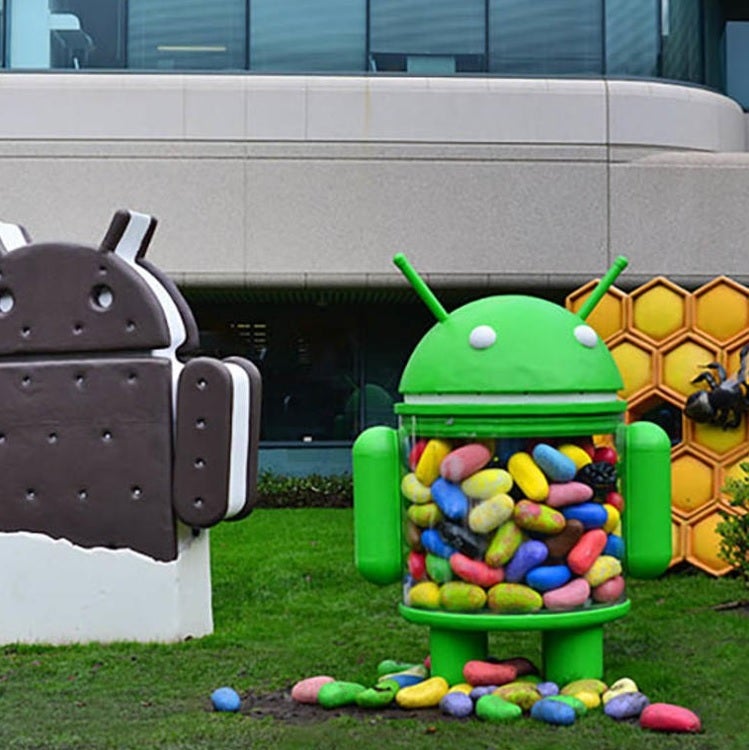The iconic Android dessert statues are missing from the Googleplex

Let's take a nostalgic trip back to the earlier days of Android. You might remember the "garden" at Google headquarters where statues representing the dessert names of each Android build were placed. From Android 1.5 to Android 9, each version of Android was named after a dessert that started with the letter of the alphabet associated with that build.
For example, Android 1.5 was the third build of Android after 1.0 and 1.1 which means that the dessert name had to start with the letter "C." Thus, Android 1.5 was given the dessert name of Cupcake and a Cupcake statue was placed on the lawn of the Googleplex. The next update was Donut followed by Eclair, Froyo (which is the one everyone seems to remember), Gingerbread, the tablet-only Honeycomb, Ice Cream Sandwich, Jelly Bean, KitKat, Lollipop, Marshmallow, Nougat, Oreo, and Pie.
Each version of Android up through version 10 was memorialized by a statue placed in the Googleplex
After Android 9 Pie, Google stopped releasing the new build's dessert name but for Android 10, a statue of the number 10 was rolled out. Even though a codename was not publicly announced, inside Google the "Q" version of the Android operating system was known as "Quince Tart." Similarly, Android 11 was known internally as Red Velvet Cake.

The Android dessert statues are missing from the Googleplex
The current version of Android, Android 12, is called Snow Cone inside Mountain View where Google is headquartered. And Android 12L, made for larger-screened Android devices, is known as SnowCone v2. And let's not rule out Android 13, which will be disseminated later this year with the internal codename Tiramisu.
No statue has been delivered to the Googleplex since the digits for Android 10. But they are in the news today because, according to Android Authority, the statues have been moved by Google and are no longer visible for visitors to gawk at. Just recently they were moved from building 44 at Google Headquarters to a small area by the company's visitor's center but have disappeared from that site.
With the pandemic, Google's headquarters haven't seen many Googlers or visitors over the last two years and those that have seen the statues lately said that they were in need of repair. So we can assume that the decision was made inside Google to remove the statues and bring them inside. The big question is, what will Google do with them next?
Some Google employees and partners are being allowed to attend the Google I/O Developer Conference for the first time since 2019. Will the company trot out freshly painted and repaired statues to help honor the return of a live audience to the conference?
The 2020 conference was canceled and last year's event was completely streamed. Google says that despite the limited live audience for I/O 2022, the entire conference will be streamed and we expect a special I/O 2022 app to be released over the next few weeks that can be used to view the festivities.
This year's conference will kick off on May 11th and runs through the 12th. We could hear some details about the rumored Google Pixel Watch, the mid-range Pixel 6a, and the foldable Pixel Notepad. And of course, Android 13 will be on the table along with the Google Tensor 2 chipset.
Visitors said recently that the statues were in need of repair
On Google Maps, a reviewer wrote, "I was expecting a treat and was met with desolation and ruin. The whole area seems abandoned and the merchandise store looks from the outside like those post-apocalyptic stores you see in video games and movies." This person had seen the statues just three weeks ago.
A recent comment about this area of the Googleplex says, "All statues have been removed. The park is just empty." Meanwhile, another reviewer writes, "No more statues at all. They removed them and there’s no signage saying if they’ll come back or not." And lastly, a similar comment calls the area a "barren wasteland...just a dirt patch."
Hopefully, Google will restore the statues to their earlier conditions since they are part of the history of the world's most popular mobile operating system.










Things that are NOT allowed: